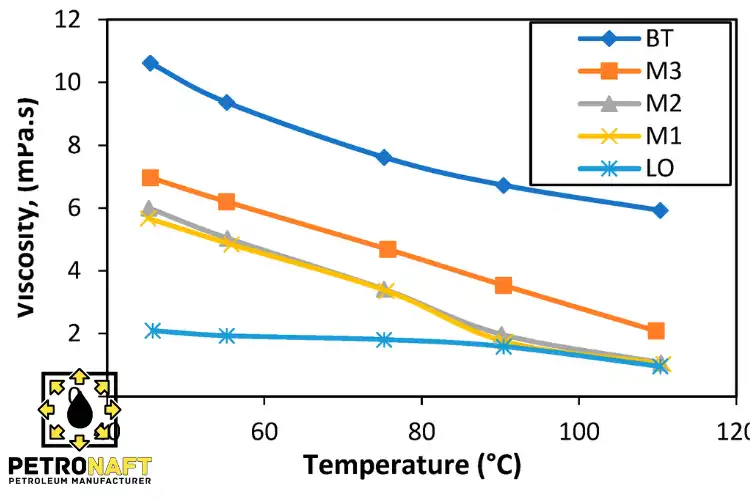Content Overview
Exploring the Intricacies of Bitumen Viscosity and Temperature
Explore the intriguing connection between bitumen viscosity and temperature, and how this relationship affects the material’s performance and usage across diverse applications. Given that temperature changes significantly impact the flow behavior of bitumen, it is crucial to acknowledge this key aspect when assessing the suitability of bitumen for various construction and industrial applications.
Introduction to Bitumen and Its Applications
Bitumen, also known as asphalt or tar, is a semi-solid hydrocarbon substance derived from crude oil. It is primarily used in road construction, where it acts as a binder for aggregates, forming a composite material known as asphalt concrete. Additionally, bitumen finds applications in waterproofing, roofing, and insulation due to its adhesive and water-resistant properties.
Explaining Viscosity and Its Significance in Bitumen
Viscosity refers to a fluid’s resistance to flow, which is a critical property of bitumen. In the context of bitumen, viscosity determines the ease of handling, workability, and application. A well-balanced viscosity ensures effective aggregate coating, bond formation, and compaction, contributing to the overall performance and durability of the resulting asphalt pavement or other products.
Temperature: The Driving Force Behind Bitumen Viscosity
Temperature has a significant impact on bitumen viscosity. As the temperature rises, bitumen becomes less viscous, facilitating easier handling and application. Conversely, a drop in temperature results in increased viscosity, making the bitumen more challenging to work with. This behavior stems from bitumen’s molecular structure and chemical composition, consisting of a mixture of different hydrocarbon chains with varying lengths and complexities.
The Need for Temperature Control in Bitumen Applications
Temperature control is essential for managing bitumen viscosity in various applications. In road construction, maintaining an appropriate temperature ensures the bitumen adequately coats and binds aggregates, providing a strong and durable pavement structure. Poor temperature control can lead to inadequate compaction, reduced workability, and weak bonding between bitumen and aggregates, resulting in compromised structural integrity and shortened pavement life.
Measuring Bitumen Viscosity: Standard Test Procedures
Several standardized test procedures are used to measure bitumen viscosity, such as the Rotational Viscometer Test (ASTM D4402) and the Dynamic Shear Rheometer (DSR) Test (ASTM D7175). These tests provide accurate and reliable viscosity measurements at various temperatures, allowing engineers and industry professionals to evaluate the suitability of bitumen for specific applications.
Viscosity Modifiers: Enhancing Bitumen Performance
Viscosity modifiers, including polymers and other additives, can improve bitumen’s temperature-dependent properties. These modifiers alter the molecular structure and interactions within the bitumen, enhancing its overall properties, such as the viscosity-temperature relationship. This improvement allows for better performance across a broader range of temperatures and conditions, promoting durability and versatility in construction applications.
The Role of Bitumen Viscosity in Sustainable Pavement Design
As sustainability becomes an increasingly important consideration in construction, understanding bitumen viscosity’s role is crucial for designing environmentally friendly pavements. By optimizing the viscosity-temperature relationship, engineers can minimize the energy consumption and emissions associated with asphalt production, paving, and compaction processes. Moreover, improved bitumen formulations with enhanced temperature performance can contribute to longer-lasting pavements, reducing the frequency of maintenance and rehabilitation efforts, ultimately decreasing the environmental impact of road infrastructure.
Temperature-Sensitive Bitumen Products: Paving the Way for Innovation
In recent years, a variety of innovative temperature-sensitive bitumen products have emerged, designed to perform optimally under specific climatic conditions. For example, low-temperature bitumen is formulated to maintain ideal viscosity in colder environments, preventing thermal cracking and ensuring better workability. Conversely, high-temperature bitumen products are engineered to resist rutting and softening under extreme heat, enhancing pavement durability in warmer climates.
Future Perspectives: Advanced Bitumen Technologies and Smart Materials
The ongoing development of advanced bitumen technologies and smart materials promises to revolutionize the asphalt industry. Researchers are exploring the potential of nanotechnology, phase-change materials, and self-healing bitumen systems to create products with superior performance and extended service life. By harnessing these innovations, we can further optimize the viscosity-temperature relationship of bitumen, paving the way for more resilient, sustainable, and cost-effective road infrastructure.
Conclusion
Understanding the relationship between bitumen viscosity and temperature is vital for optimizing its use in various industries, particularly road construction and paving. By carefully controlling temperature and employing viscosity modifiers, industry professionals can achieve the ideal balance of workability and performance, resulting in longer-lasting and more durable pavements. As research and innovation continue to advance, we can expect to see even more progress in the development of temperature-sensitive bitumen products and smart materials, ushering in a new era of sustainable and resilient infrastructure.
Purchasing from Petro Naft
For more detailed information and to purchase the product discussed in this article, please visit the dedicated product page below. Alternatively, use the various communication channels provided on our site to register your purchase inquiry or take advantage of our expert guidance.
Prepared by the PetroNaft Co. research team.



